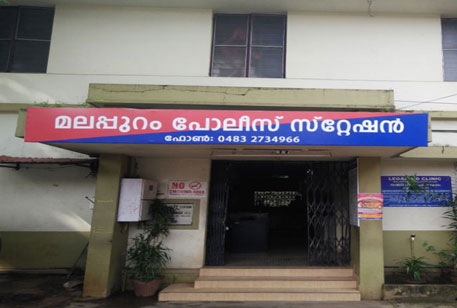|
Malappuram Police Station came to existence on 20.06.1927 (Go No. 1656/1925). The new building of Police Station was inaugurated by Sri. R. Rajagopal Narayan IPS, DGP of Kerala on 11.07.1989 in survey No. 453 / 3 of Malappuram Muncipality vide. GO.Rt No2750/89 Home 12.06.1989. The station is situated at Down Hill, Malappuram. Head Quarter of Malabar Special Police, District Head Quarters (Civil Station) etc. are situated in Malappuram Police Station Limit, Kottakkunnu is the most important Tourism place comes under the PS Limit. Thripuranthaka Kshethram is the important temple comes under this station limit. Malappuram Police Station comprises the following villages of Ernad and Perinthalmanna Taluk. Malappuram, Melmuri, Kodoor, Koottilangadi, Ponmala and Panakkad Villages. Malappuram Municipality, Koottilangadi Panchayath, Kodur and Ponmala Panchayath are in Malappuram Police Station limit. Vengara, Manjeri, Kottakkal, Kolathur and Mankada Police Stations are the border Police Stations of the Malappuram PS
Historical Importance
Malappuram was a military headquarters from ancient times though the ancient history of the city is hardly seen recorded. However, there are some pre-historic relics, particularly Rock-cut caves found in some parts of the city like Melmuri, Ponmala etc. manifesting the inhabitancy. Locality named like Valiyangadi, Kootilangadi, Pallipuram etc points to the Jain - Buddhist history of Malappuram. Notably, the 1500 year old Jain Temple above 2000ft sea level at Oorakam Hill of Malappuram undoubtedly proves the same. During the Sangam period, Eranadan Malappuram was under the Chera Empire. Places like PattarKadav, Panakkad etc are possibly evolved out of Pattars and Panars having lived there. But no further details are available about the life and culture of the people either during the Sangam age or in the post-Sangam age. Archeological relics found in Malappuram also include the remnants of palaces of the eastern branch of the Zamorin reign. Details of the rulers of erstwhile Malappuram, who were the ancestors of later Zamorins, figure in the Jewish copper plates of Bhaskara Ravi Varman (1000 AD) and in the Kottayam copper plates of Veera Raghava Chakravarthy (1225 AD). The later history of the city is interwoven with the history of Zamorin's rule.
|






